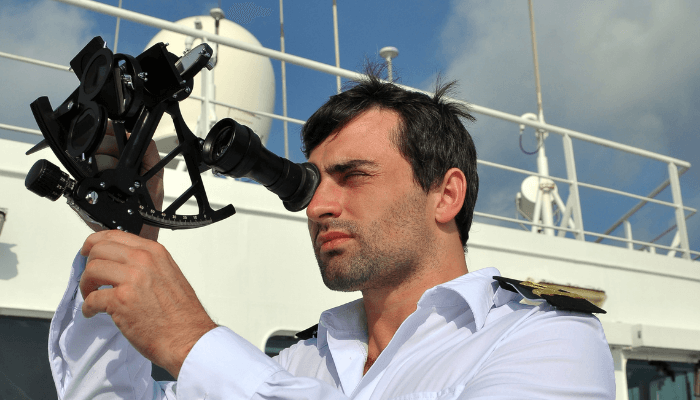

Navigation by stars has been the oldest and the most conventional way of navigating in the vast oceanic expanse. Technological advancements such as marine radars and ECDIS might have enabled and provided far more pin-point precision than star navigation contemporarily, but fact remains that celestial navigation was one of the highlights of the ancient maritime era.
What is Celestial Navigation all about?
As the name suggests, celestial navigation is carried out by observing the positions of a celestial bodies in the skyin order to navigate the vessel. The underlying premise of ship navigation in this manner is that the positions of the planetary objects and stars tend to re-occur after every few years.


In order to correctly calculate and tabulate positions by way of the celestial objects, it becomes necessary to understand the correlation between the angle of the object and its horizon with the vessel. Devices like the sextant and reference manuals like the nautical almanac are used to calculate the required position of the vessel and steer it accordingly.
Alongside the sun, moon and visible planetary objects like Jupiter, stationary objects like the North Star were used to determine the latitudinal and longitudinal positions. The vessel’s position was then corroborated suitably, after eliminating the calculative errors.
Today, vessel tracking systems and Automatic identification system are used to track vessels at the sea.
Developments to Celestial Navigation
While the origins of navigation by stars was highly rudimentary at first with the most simplest of gadgets, there were technological developments carried out to aid the process of celestial navigation. Over the years, especially in the early 1800s, various astronomical scientists came up with interesting discoveries to facilitate a greater ease in carrying out star navigation.
Conclusion
The usage of ship navigation through stars and other planetary objects was much in vogue till the latter-part of the 20th century. At present celestial observation is merely carried out as an interest or hobby, an off-shoot of man’s initial interest to keep track of his whereabouts through the most constant objects in sight.










We believe that knowledge is power, and we’re committed to empowering our readers with the information and resources they need to succeed in the merchant navy industry.
Whether you’re looking for advice on career planning, news and analysis, or just want to connect with other aspiring merchant navy applicants, The Marine Learners is the place to be.